A Streetscene Good Practice Guide
Good Practice made simple: The Rights and Wrongs of a Good Streetscene Practice
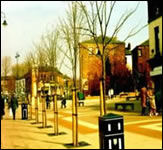

1. Introduction
This document is intended to promote a greater awareness of good design and the need for a closer working relationship between the different professions of the Council's departments, to bring about a significant improvement in the visual quality of the streets of the Borough.
2. Aims of the Document
This Good Practice Guide gives a positive approach to reducing the intrusive effects of signs, street works and poorly designed public areas. A particular objective of this guide is to ensure an enhancement of our street environment and the image of the town centres.
This Guide is to be used in conjunction with, technical regulations issued by Government Departments, Supplementary Planning guidance, both national and Council based and subsequent guidance produced in house.
3. Document User
The Good Practice Guide, is intended to be used by the client and the client's contractor. The Good Practice Guide will be a policy statement for:
- Planners
- Engineers and Designers
- Highway Maintenance staff
- Street Cleansing DSO
- Council Public Works
- Contractors
- Developers
- Street Lighting Engineers
- Council Highway DSO
4. Definition of Areas
In order to achieve a set of guidelines, which relate to the priorities of the Borough, the document is split into a series of zones to measure the Authority's achievements. The following zones will apply;
- Inner Zone
- Outer Zone
- Feature Areas, such as Fletcher Square
- Conservation Areas, such as Fairfield Moravian Settlement
5. Good Design Practice
Five factors need to be considered in all aspects of good practice, namely; quality review, site design, work specification, costs of on-going maintenance and street safety.
Quality Review: It is very important that reviews of existing situations are carried out so that an overview can be taken. Poor practices can cause confusion, resulting in an uncontrolled ugly clutter in the street and pedestrian areas.
Site Design: The design and specification should be carried out with full knowledge of the site, the reality versus the desk approach!
Work Specification: A specification must be used, it should be explicit and encompass consultation with relevant departments and documentation. The specification should be drawn up in partnership with those responsible for the future maintenance.
Finally, it is vital to check that the finished work is in compliance with the
specification. Where appropriate, a consistent approach to drafting the specification should be effected
Costs of on-going Maintenance: Specifications should be explicit and the costs that will be incurred as a result of the on-going maintenance be practical with the rest on the site.
Street Safety: Designs should try to, ensure that they create a safe environment for the road user and pedestrian with special attention given to the partially sighted and non able bodied.
6. Guidance Procedure
6.1 Highway and Street Signs
The Problem:
The streets and public areas of Tameside are cluttered, with too many signs, both authorised and unauthorised resulting in too many poles.
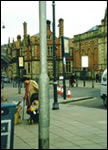 The Action:
The Action:
Consideration must be given when siting highway and street signs to five environmental factors, namely; position, size, height, number and method of fixing. Additional, attention should be given to the structural integrity of the 'support'.
We intent to minimise the number of free standing vertical signs in the street. New signs should be attached to buildings where practicable, dependent upon the co-operation and agreement of the building owners. The use of new poles will need a strong justification.
The size of signs should be minimised, compatible with statutory requirements and/or considerations of highway safety, to limit the visual impact they have in the street.
Ask the question as to the need for new signs. If there is a necessity, an existing pole should be used. Where appropriate, a structure check will be necessary.
We intent to clear the ugliness and cluttering of the pedestrian areas and streets. New poles should be no closer than 15 metres and should be incorporated into existing/proposed street furniture, wherever practicable.
The Council will remove redundant poles and signs within one week of installation of replacement signs.
6.2 Waiting Restriction Signs
The Problem:
There is an over abundance of waiting restriction signs and poles creating a visual clutter.
The Action:
Where such signs have to be placed in the street, we want them attached to existing poles or to other items of street furniture. Wherever possible existing poles should be removed to reduce numbers.
6.3 Street Furniture
The Problem:
A lot of street furniture within our towns is of a poor quality and is not functional and does not conform to the corporate style and colour.
The Action:
The Council will strive to minimise the amount of street furniture within the Borough's towns so as to reduce the visual clutter and to enhance the quality of the pedestrian area.
6.4 Bollards
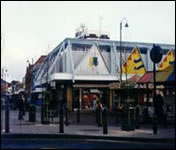 The Problem:
The Problem:
The pedestrian areas are dominated with too many and often unnecessary bollards, creating physical and unsightly obstructions.
The Action:
A thorough on-site design/specification will ensure that bollards are replaced like for like, hence not creating an obvious visual discord in the street.
Where bollards are to be used to create a physical barrier between two areas, the designer should investigate the options for using other types of street furniture to achieve that barrier, thereby leaving the areas to be defined as free and open uncluttered spaces.
The Authority will use the highest quality materials in the 'A' zone, bollards will be replaced like for like.
In the 'B' zone, town centre bollards will not be used. The designer will give special attention to the use of bollards in the 'Feature Areas' and 'Conservation Areas', which will have their own unique identity.
We need to have a consistent design of bollard for use in our town centres. This needs to be produced by a manufacturer with a longstanding track record.
The specification will pay due regard to the relevant colour scheme (see Colours in our Towns Section)
In new projects the design team will give paramount attention in drawing up the specification. Where necessary early consultation with elected Members should be carried out.
6.5 Litter Bins and Seating
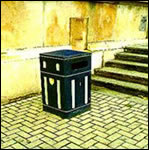 The Problem:
The Problem:
Litter bins and seating are generally poorly positioned in the street.
The Action:
Where damage occurs to litter bins there is a presumption they will be renewed within 10 working days in the 'A' zone and 'Feature Areas' (consideration should be given to the time needed to order specials in these zones). In the remainder of the Borough this will be within 15 working days.
Replacement street furniture should match with the existing specification so as to achieve a co-ordination in design terms.
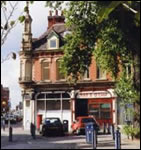 Litter bins can be used effectively to create physical barriers. However easy access and servicing must not be overlooked in the siting of litter bins.
Litter bins can be used effectively to create physical barriers. However easy access and servicing must not be overlooked in the siting of litter bins.
Designers should ensure public seating is away from windy and cold positions preferring sunny positions in conjunction with sensitive tree planting to provide an element of shade.
The designer should give consideration to the siting of litter bins away from seating to prevent the nuisance of wasps and unpleasant smells in warm weather.
6.6 Lighting Columns
The Problem:
Within built up urban areas there is a problem with light pollution and an over abundance of obstacles caused by too many lighting columns.
The Action:
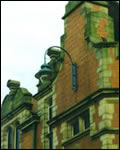 There will be a presumption in favour of fixing lighting units to the walls of buildings rather than erecting new columns in the 'A and B' zones. If this is impracticable, then lighting columns should be placed to the back of pavement. In 'Conservation Areas' and 'Feature Areas', lighting columns must not exceed the scale of the building they relate to. These areas allow for imaginative design of lighting provision.
There will be a presumption in favour of fixing lighting units to the walls of buildings rather than erecting new columns in the 'A and B' zones. If this is impracticable, then lighting columns should be placed to the back of pavement. In 'Conservation Areas' and 'Feature Areas', lighting columns must not exceed the scale of the building they relate to. These areas allow for imaginative design of lighting provision.
Replacement like for like lighting columns will be painted to co-ordinate with the adopted colour scheme. This will be done within 1 week of the column's installation.
6.7 Streetworks and Floor
The Problem:
The disrepair of the floor causes a visual intrusion on the image and quality of our towns.
The Action:
Footways and paved areas will be reinstated as original or with materials to match the surrounding materials on completion of the works, so as not to cause a visual eyesore.
The repair of the streets and pavements will be inspected within 48 hours of the completion of works by the Public Utilities so as to create a reputation in Tameside for doing a good job.
Unsympathetic materials within our streets and paved areas, which cause an eyesore must not be used, such as black tarmac in an area of block paving or stone sets.
Specifications must be carefully chosen to ensure that areas do not become a maintenance liability, particularly when large vehicles have some access to pedestrian areas.
6.8 Landscaping in the Street
The Problem:
All too often this is ill thought out within specifications and results in eyesores in the streetscape: soft landscaping versus hard landscaping.
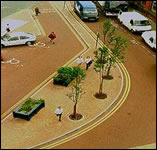 The Action:
The Action:
Areas of land less than 10 square metres, within new developments should be hard landscaped using appropriate materials. The design and specification can be administered through the planning application procedure (see Section 6.10).
Where strips of land occur as a consequence of development, which is less than 1.5 metres wide, these should be hard landscaped with quality materials.
The Council will produce a supporting document to encourage tree planting and indicate the types of trees to be encouraged to incorporate within hard landscaping schemes as a way of satisfying the above statements of intent.
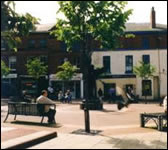 Landscape specifications must give consideration to the long-term appearance and future maintenance.
Landscape specifications must give consideration to the long-term appearance and future maintenance.
Tree grilles and guards should be of a design that allows easy access for maintenance.
There will be a presumption in favour of low maintenance landscaping schemes, and to this end, subsequent maintenance schedules are essential.
6.9 Boundary Treatment-The Edge of Public/Private Land
The Problem:
This is not given enough priority, it is often the case that the lowest cost solution is used in designing proposals.
The Action:
We will promote hard interface treatments to new developments both by the Authority and the private sector in the 4 identified zones. In urban settings, treatments to the back of pavement will be specified whether these are boundary walls or fencing/railings.
In rural settings, quality soft landscaping will be encouraged and should be to the back of Highway Authority land and should have a low maintenance treatment.
Specifications for boundary treatments are to be supported through supplementary planning guidance.
Boundary treatments should be sympathetic to the design elements in the area.
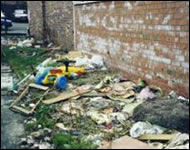 6.10 Planning Conditions and Landscaping Proposals in New Developments
6.10 Planning Conditions and Landscaping Proposals in New Developments
The Problem:
All too often the landscaping and boundary treatments to new development are poorly thought out and are often given a low priority.
The Action:
With all new developments, close consideration must be given to landscape proposals and the boundary treatment between the new development and the back of the Highway Authority land.
Boundary treatments should be to the edge of the site adjoining the Highway Authority land.
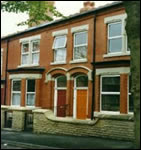 Railings and fencing must be to the absolute edge of the site to prevent small areas of land between the back of the highway and the private land.
Railings and fencing must be to the absolute edge of the site to prevent small areas of land between the back of the highway and the private land.
Planning Conditions must request comprehensive landscaping proposals where applicable and in assessing proposals, they should adhere to this streetscene good practice.
6.11 Colour in our Towns
The Problem:
The furnishings of our town centres have no continuity in the colours used within the townscape.
The Action:
Good practice will be promoted by using sympathetic colour schemes outside those areas, which have identified colour schemes, such as the use of green in the more rural settings. 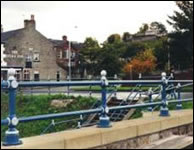
In Conservation Areas a colour scheme will be promoted that is indicative of the character of the particular area.
In new 'feature areas' colour schemes will be an integral part of the design process.
Where new street furniture is installed, a check should be carried out to ensure that there is no chipped paintwork.
For the avoidance of doubt the following applies:
|
Ashton: |
Dark Blue(20 C 40)/Silver |
|---|---|
|
Portland Basin: |
Dark Blue (20 C 40)/ Dark Red(04 D 45) |
|
Hyde: |
Green(14 C 39)/Gold |
|
Mossley: |
Green(14 C 40)/Antique Gold |
|
Stalybridge: |
Blue(18 C 39)/Grey(00 A 05) |
|
Droylsden: |
Cherry/Claret/Gold |
|
Mottram: |
Sherwood Green(12 D 45)/Gold |
|
Denton: |
DarkBlue(20C40) PaleGrey(22B17) |
|
Dukinfield: |
Burgundy(O4D45) Antique Gold |
| Main Roads: | Ice Blue (18 E49) |
7. Reference Documents
- Highways Act 1980
- Planning Policy Guidance Note 15; Planning and the Historic Environment, 1994
- English Heritage: Street Improvements in Historic Areas, 1993
- English Heritage: Conservation Area Practice, 1995
- Civic Trust/English Historic Towns Forum: Traffic Measures in Historic Towns, 1993
- Traffic Signs, Regulations and General Directions, 1994 (S1 1994/1519)
- Traffic Advisory Leaflet 1/96: Traffic Management in Historic Areas
- Traffic Advisory Leaflet 10/96: Traffic Calming Bibliography
- Traffic Advisory Leaflet 8/94: traffic Signs, Signals and Road Markings
- Highway (Road Humps) Regulations 1996, (S1 1996/1483)
The Rights and Wrongs of Good Streetscene Practice
A summary of how to get it right and transform the appearance of our towns:
1. Highway and Street Signage
Is another sign needed? If so can it be made smaller. Where possible don't put another pole in the ground, use an existing pole or the wall of a building.
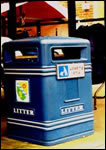 Right: A litter bin has several uses. |
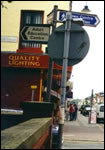 Wrong: Too many poles with only one sign. |
2. Waiting Restriction Signs
Don't just put another pole in the ground, look around, can an existing pole be utilised or can the wall of a building be used. Check before you action.
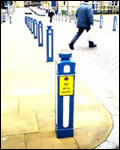 Right: The traffic sign avoids an extra pole. |
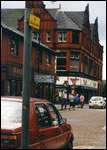 Wrong: An extra pole with only one sign. |
3. Street Furniture
Does it match the corporate style and colour for its location? Do not just put anything in it's place.
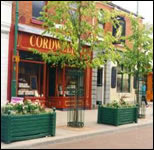 Right: Trees act as a barrier in Hyde town colours. |
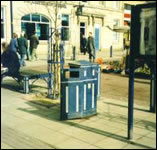 Wrong: Too much furniture, causing clutter. |
4. Bollards
Think, is a bollard absolutely necessary! can another piece of street furniture be used instead, check.
Do not just put any old bollard in as a replacement. Check, does it match the style and colour of those either side of it.
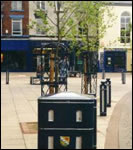 Right: Bollards spaced out with other street furniture |
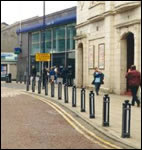 Wrong: Bollards too close |
5. Litter Bins and Seating
Replace broken and damaged Litter Bins quickly, it will save unnecessary additional work in picking up litter.
Does it match the corporate style and colour, check before fixing.
 Right: Well sited bin in correct colours and emptied. |
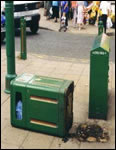 Wrong: Broken litter bin awaiting repair, creates litter and looks poor. |
6. Lighting Columns
Ask yourself, is another lighting column needed? If yes, can an existing column be used or is possible to use the wall of an existing building.
Check if the owner's agreement has been obtained.
Is the new column going to match the corporate style and colour for the location it is in.
 Right: Lighting without the use of poles. |
 Wrong: Too many poles, some not in town colours. |
7. Streetworks in the Street and the Pavements
Always replace streetworks with new materials to match the ones that you took up. Do not use black tarmac.
 Right: Correct town colours and well maintained footpaths. |
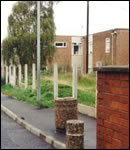 Wrong: Wrong style of bin with no town colour. |
Colours in our Towns and Streets.
Always check before you get your paint brush out, that the proposed colour complies with the approved
corporate colour scheme for the particular location in question.
Do not just paint the item so as to get the job done!
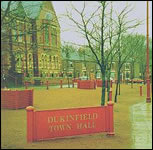 Right: Correct town colours with a good mix of street furniture. |
 Wrong: A new lighting column, which has not being painted. |
If you have any queries as to what will be right and wrong, check with your supervisor. Avoid unnecessary work on your part and avoid creating eyesores on the appearance of the Borough's towns.
Your comments on the streetscene in Tameside would be much appreciated by us, if you would like to make a comment please Send a Message to Us

